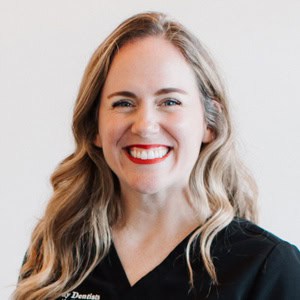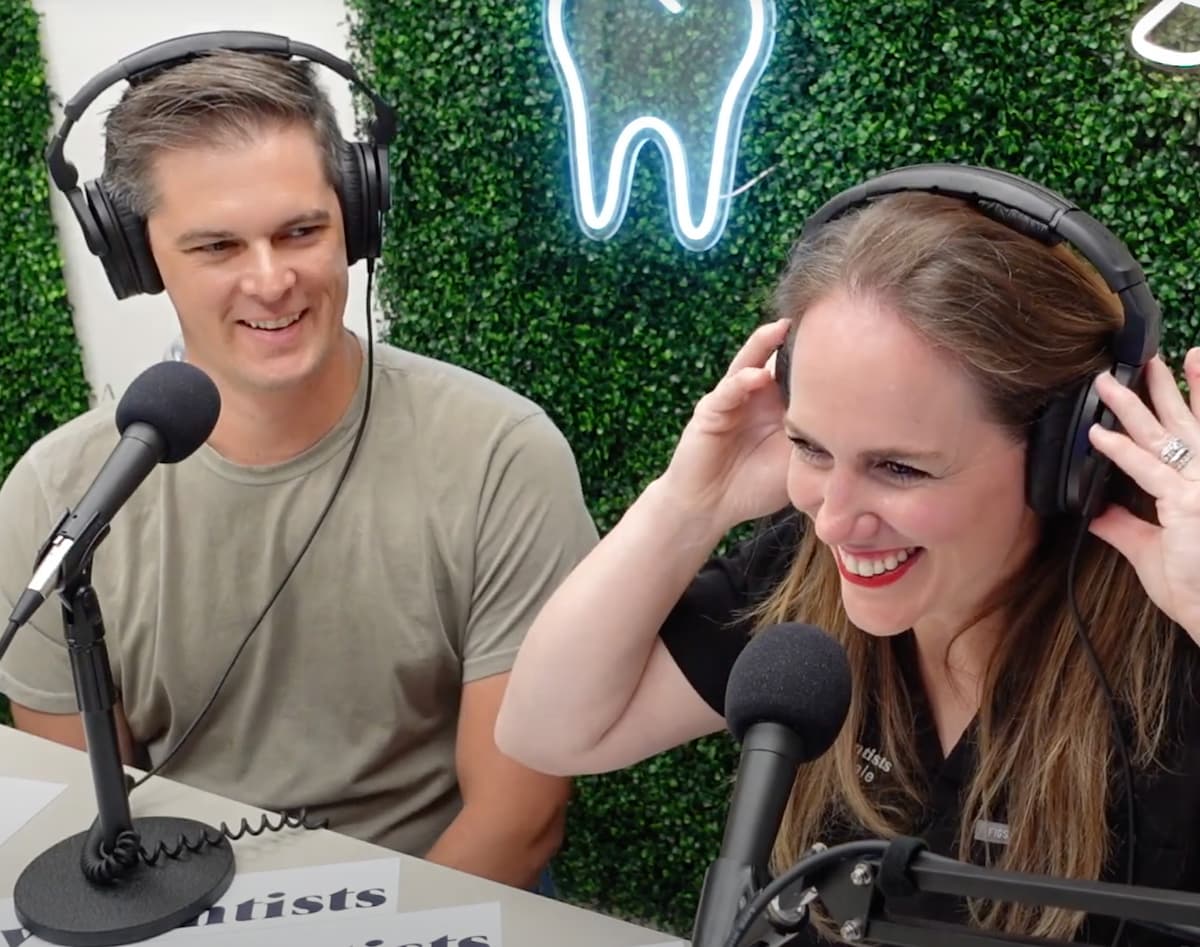Watch Dr. Kalli and Dr. Kyle discuss this topic on the SleepWell Journey podcast.
What’s Really at Stake with Tooth Extractions?
Has your child’s orthodontist suggested pulling teeth to make room for braces? If so, you’re not alone. This approach—usually involving the removal of premolars (also called bicuspids)—has been common for decades. But it may come with long-term consequences that most parents aren’t warned about.
As someone who used to follow this approach before learning better, I want to walk you through the risks of orthodontic extractions, how they can affect breathing and sleep, and what healthier alternatives I now use to support full development in the kids I treat every day.
Why Orthodontists Still Recommend Pulling Teeth
For decades, pulling teeth—especially premolars—has been a standard solution for crowded mouths. Orthodontic training emphasizes fitting teeth into whatever jaw size a child has, instead of guiding the jaw to grow and make room naturally. This made extraction seem efficient, predictable, and effective.
But that training rarely included airway health, tongue posture, or long-term breathing outcomes. Even though many families assume orthodontics is one-size-fits-all, the field has been slow to change. In fact, it can be a bit of a closed circle. There’s a strong tendency to protect norms, and not every provider wants to admit that the standard of care might need to evolve. It’s hard to say, “We’ve been doing it wrong.” I’ve had to say that myself—and we all know how hard it is.
But if we want better outcomes for our kids, we have to be willing to do better.
Extractions Are Falling Out of Favor
The good news? Things are changing—slowly. Fewer orthodontists today are defaulting to extractions.
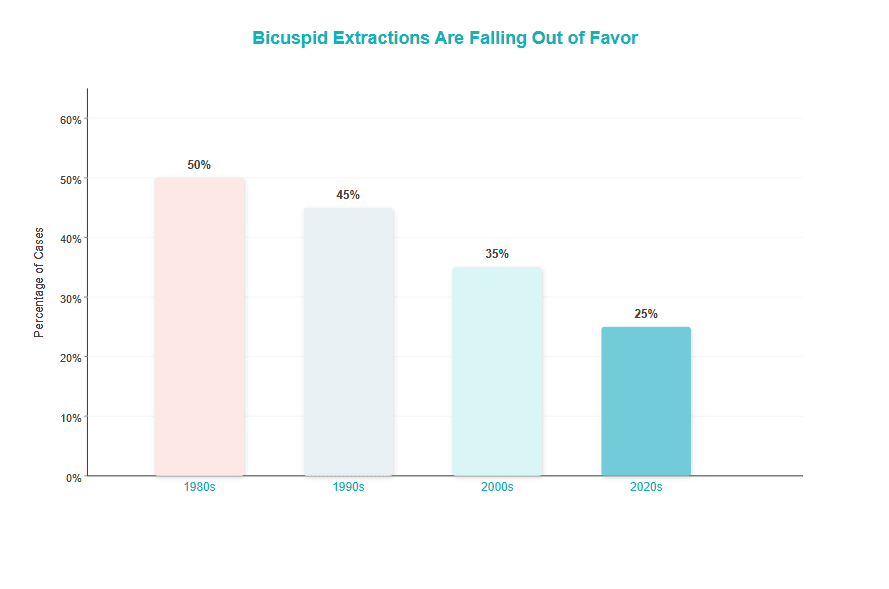
Back in the 1980s, half of all orthodontic patients had permanent teeth removed as part of treatment. Today, that number is closer to 1 in 4. It’s a big improvement—but not enough. Especially when we now know how much these decisions affect the airway, sleep, and long-term health.
Are Premolars Teeth Really “Extra”?
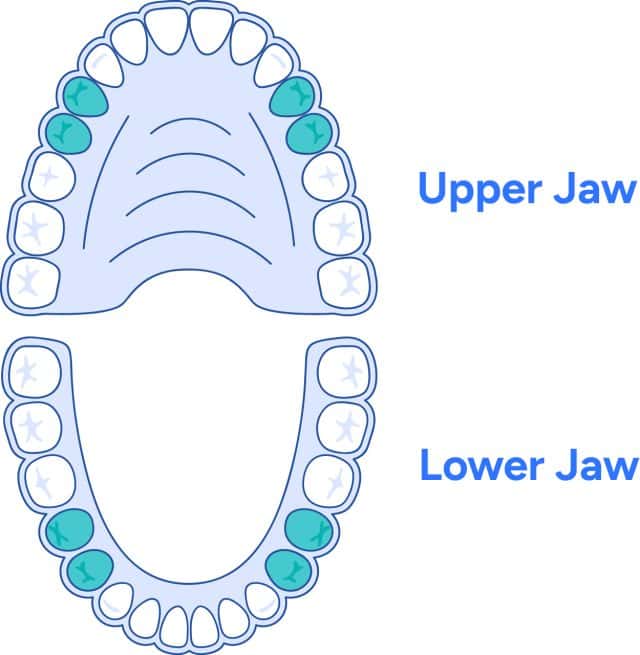
You might be told that premolars are “extra” or not essential. But every tooth plays a role. These teeth help maintain the natural shape of the dental arch, provide space for the tongue, and support proper facial development. Since each developing tooth helps to guide jaw growth, removing teeth too early can limit how much space the mouth is able to create—especially during key growth phases.
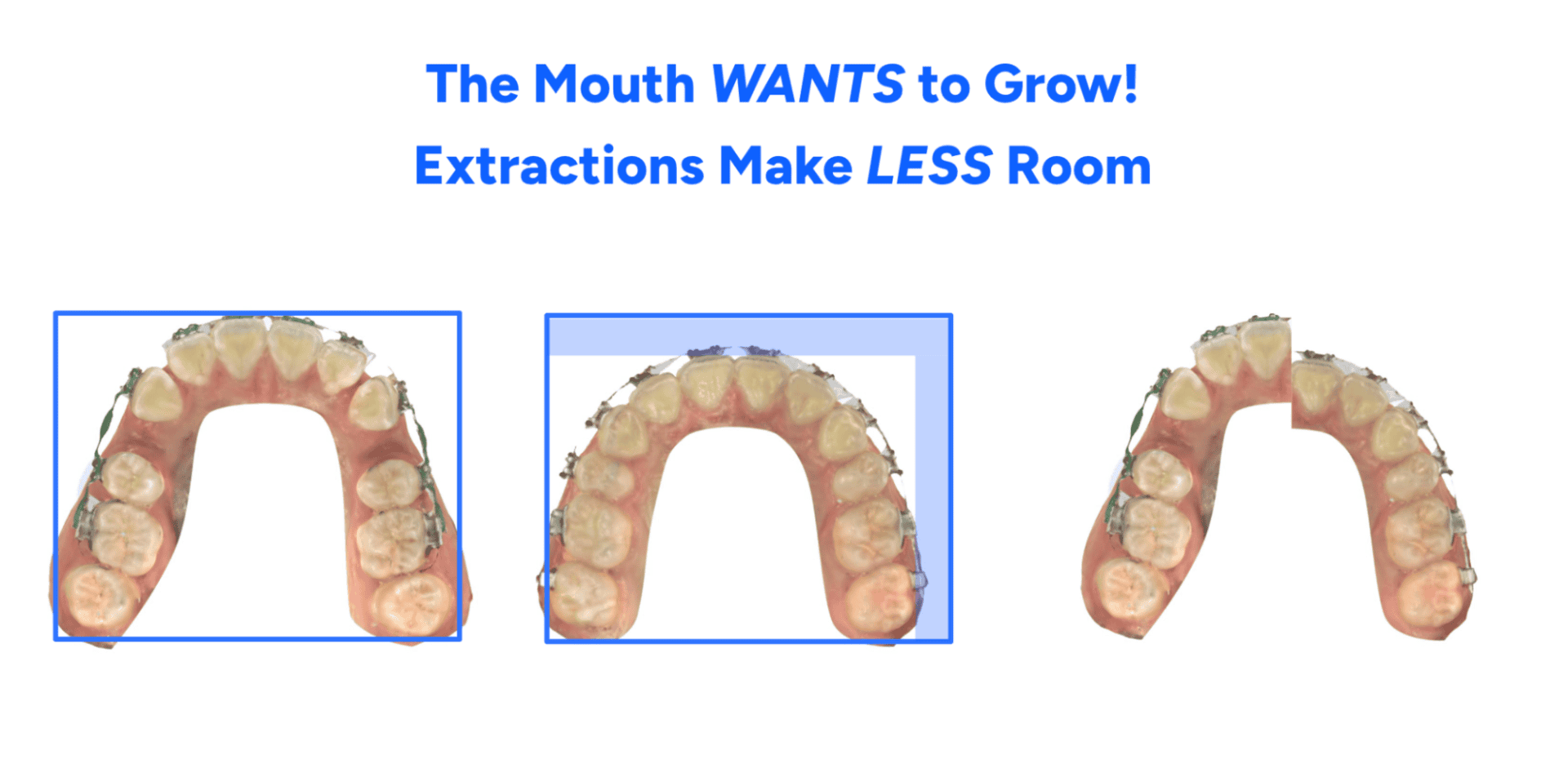
When healthy teeth are removed, the dental arch shrinks—leaving less room for the tongue and often creating crowding in the airway. Research has even shown that removing premolars and shifting the front teeth toward the back of the mouth can reduce airway space and alter how throat muscles are positioned, making it harder to breathe during sleep.1 I often tell parents: if your child’s shoes are too tight, you don’t cut off their toes—we find shoes that fit. The same goes for jaws. Instead of taking teeth out, we guide the jaw to grow and make space where it’s needed.
We have to stop acting like teeth are accessory bones.
The Hidden Risks of Tooth Extraction
How This Affects Breathing and Sleep
With less space in the mouth, the tongue may fall back during sleep and partially block the airway. This is the root cause of much of sleep-disordered breathing, and our work at The Airway Dentists focuses on getting the tongue into its proper resting position at night. One developmental reason for this is that the jaw doesn’t grow forward enough—causing the tongue and soft palate to shift toward the throat and narrow the airway.2
This restriction, especially in the back of the throat, can make it harder to breathe during sleep. For some kids, that means snoring or mouth breathing. For others, it can lead to more serious disruptions like pediatric sleep apnea—where breathing stops and starts throughout the night.
These issues affect more than just rest. Poor sleep can impact your child’s learning, focus, mood, and even physical development. In fact, conditions like bedwetting and ADHD-like behavior are often linked to undiagnosed sleep apnea.
Related articles:
Learn how sleep apnea may be mistaken for ADHD in kids.
Explore the link between sleep apnea and bedwetting.
Beyond the Mouth: Long-Term Risks
When the jaw is underdeveloped, the problems don’t end in childhood. Many adults who had extractions in their teens end up with:
- Adult obstructive sleep apnea
- TMJ pain or jaw clicking
- Headaches
- Tooth grinding (bruxism)
- Night guard dependency (which can make airway issues worse)
- Increased risk of second-order effects like cardiovascular issues due to sleep apnea
Are Extractions Ever Justified?
In very rare cases—like trauma, pathology, or extreme jaw discrepancies—extractions may be part of the treatment plan. But those situations are the exception, not the norm.
For growing children, I don’t believe in removing healthy teeth just to make room. Most kids can be treated successfully with expansion—especially when we start early. I’ve seen many patients who were told extractions were their only option, and we were able to create space without removing a single tooth.
The key is looking beyond alignment to the full picture: airway, tongue posture, and natural jaw growth.
Questions Every Parent Should Ask Before Agreeing to Extractions
- Will you assess my child’s airway as part of the treatment plan?
- Do you prioritize jaw expansion before considering extractions?
- What non-extraction options are available for my child?
- How might this treatment affect my child’s breathing and sleep?
- Can you share success stories or examples of expansion-based care?
- Do you collaborate with sleep doctors or ENTs?
- Will you evaluate both the upper and lower jaws for expansion?
You are your child’s best advocate. It’s okay to ask questions or get a second opinion—especially when the procedure is irreversible.
Download the Printable Version: Bring this checklist with you to your next orthodontic appointment—or share it with a friend who’s been told their child needs teeth pulled.
A Healthier Alternative: Airway-Focused Orthodontics
What I Do Instead
Instead of removing teeth, I focus on helping the jaws grow and function properly. This airway-centered approach preserves all healthy teeth and creates space by expanding the dental arches.
Why It Works
Expansion gives each tooth the space it needs to align naturally—without crowding or removing any. But the benefits go beyond just straight teeth. Expansion also:
- Supports nasal breathing by opening up the nasal passages and helping kids breathe more easily through their nose.3
- Makes room for the tongue by widening the upper jaw and encouraging a healthier tongue position.4
- Reduces airway obstruction by giving more space in both the nose and throat, improving airflow during sleep.
We want the teeth further away from the throat, not closer to it. Treatments like palatal expansion have been shown to increase nasal airway space as the upper jaw is widened, leaving room for the tongue to rest in its proper position.5
Why Early Intervention Matters
Ages 4 to 7 are an ideal window for evaluation. At this stage, the jaws are still growing and more responsive to treatment.6 Waiting until the teen years means missing this critical growth phase—and it may lead to more aggressive treatment later.7
By age 12, most kids have already completed up to 90% of their jaw and facial development. We can still treat, but we don’t have the tailwinds of a naturally growing body to help.
Signs to Watch For
Not all airway issues are obvious. Watch for these warning signs in kids aged 4–7:
- Habitual mouth breathing (especially during sleep)
- Snoring or gasping at night
- Forward head posture
- Daytime fatigue, irritability, or signs of inattention that resemble ADHD
These signs may indicate breathing disruptions that are worth a closer look.
Thinking about extractions?
Before making a decision that can’t be undone, let’s talk. A simple evaluation could change the direction of your child’s care—and their future.
What Happens in an Airway Evaluation?
My team and I go beyond just looking at how the teeth line up. Here’s what we check during a full airway-focused exam:
- A questionnaire about your child’s sleep, behavior, and health
- A gentle visual exam of the tongue, tonsils, palate, and face shape
- Breathing assessments
- 3D imaging (if needed) to evaluate airway space
- Referrals to trusted sleep or ENT specialists if needed
This helps us get the full picture and build a treatment plan that supports both healthy teeth and healthy breathing.
Why This Matters
We are now several generations deep into a cycle of underdeveloped jaws, mouth breathing, and sleep-disordered breathing. And it’s catching up to us.
Our society isn’t getting healthier, and neither are our kids. We’re seeing more behavioral concerns, more medications, and more missed opportunities to address root causes like poor sleep and airway restriction.
Orthodontics should be about more than straight teeth. It’s a chance to support your child’s overall development—including their ability to breathe well and sleep deeply.
What to Do Next
If your child has been recommended for braces or tooth extraction, take a pause. Reach out to one of our Houston offices to schedule a comprehensive airway evaluation. We’ll take the time to explain every option and help you feel confident in the path forward.
Because your child deserves more than a nice smile. They deserve a lifetime of healthy breathing.
One final note: Even if your child has already had teeth pulled, there’s still hope. We may not be able to undo everything, but we can often do something—and that something can change your child’s future.
FAQs
What if my child already had teeth pulled—can we still help them?
Yes. While we can’t undo an extraction, we can absolutely work to restore balance in the airway and jaw. In some cases, we explore ways to reopen space, improve tongue posture, and support better breathing. It may be more complex—but it’s never too late to help a child breathe and sleep better.
Why does jaw size matter for breathing?
Your child’s jaw isn’t just there to hold their teeth—it also defines the size of their airway and the space available for their tongue. A narrow jaw often means a narrow airway. When there’s not enough room, the tongue can fall back during sleep and partially block the throat, leading to mouth breathing, snoring, and even sleep apnea.
How do I know if my child needs expansion?
Signs of a small or underdeveloped jaw include crowded teeth, mouth breathing, snoring, dark circles under the eyes, or even ADHD-like behavior. If your child is between ages 4–7 and already showing crowding or bite issues, it’s a good idea to get an airway-focused evaluation. Earlier is better—because we can guide growth before it’s complete.
Isn’t extraction faster and cheaper?
It might look that way upfront—but the long-term costs of airway restriction, sleep problems, and repeat orthodontics later in life are much higher. Our goal is to do it right the first time, not just get teeth to line up quickly. Expansion protects more than the smile—it protects breathing, sleep, and overall wellness.
Sources:
- Caldas, L. D., Takeshita, W. M., Machado, A. W., & Bittencourt, M. A. V. (2020). Effect of rapid maxillary expansion on nasal cavity assessed with cone-beam computed tomography. Dental Press Journal of Orthodontics.
- Nazir, R., Ahmed, U., & Ahmed, N. (2024). Effect of First Premolars’ Extraction with Maximum Retraction on Airway and Hyoid Bone Position in Class I Bimaxillary Dentoalveolar Protrusion Cases. Iranian Journal of Orthodontics.
- Ng, J. H., Song, Y. L., & Yap, A. U. J. (2019). Effects of bicuspid extractions and incisor retraction on upper airway of Asian adults and late adolescents: A systematic review. Journal of Oral Rehabilitation.
- Pritchard, T. (2015). Maxillary expansion or bicuspid extraction: A case study in orthodontics. Biermann Orthodontics.
- Parakkal, T., Ghosh, P., Varma, N. K. S., Ajith, V. V., & Sarika, K. (2023). Long-term Effects of Rapid Palatal Expansion on Airway and Nasal Cavity Using Three-dimensional Analysis: A Systematic Review. World Journal of Dentistry.
- Müller-Hagedorn, S., Abadie, V., & Bartzela, T. (2025). Orthodontic Perspectives in the Interdisciplinary Management of Pediatric Obstructive Sleep Apnea. Children.
- Yoon, A., Abdelwahab, M., Bockow, R., et al. (2022). Impact of rapid palatal expansion on the size of adenoids and tonsils in children. Sleep Medicine.
